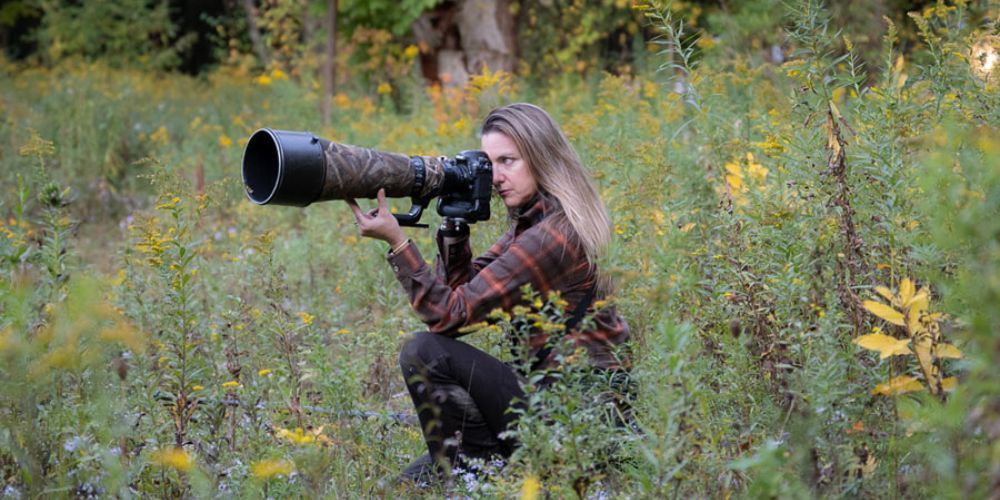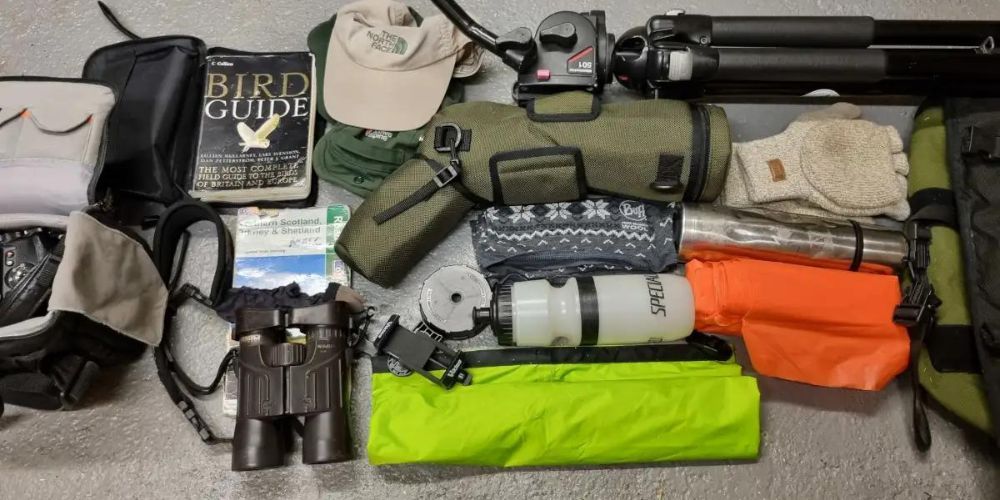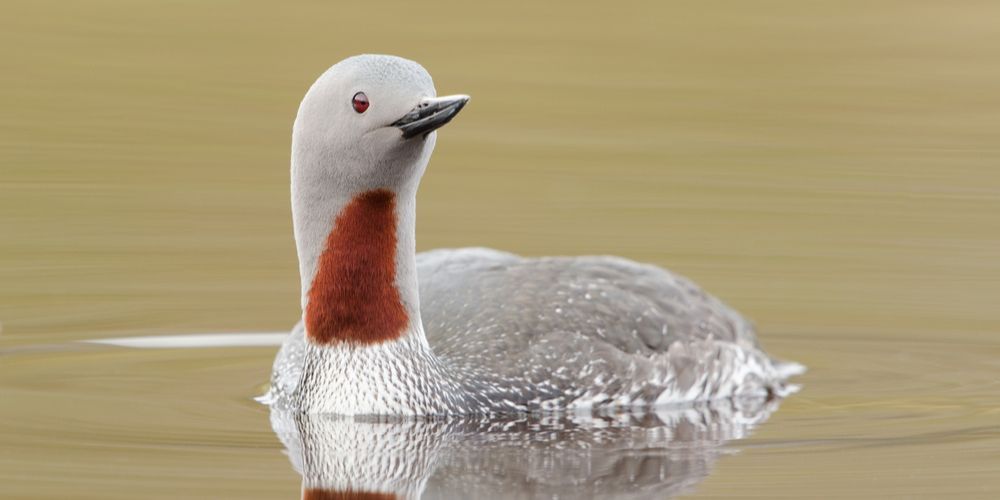How to Choose the Best Thermal Binoculars for Night Vision and Hunting
Selecting the right thermal binoculars hinges heavily on understanding their operation. They work by capturing heat signals from animals or objects, making them ideal for night vision and hunting. However, not all binoculars are created equal. The quality of infrared lenses and optics used can greatly influence the clarity and accuracy of visible images produced. So, choosing superior infrared lenses becomes a crucial part in making your selection. A good hunt awaits.
When selecting thermal binoculars, it's crucial to prioritize imaging quality, sensor size, and detection range. For instance, a higher resolution and larger sensor size improve image clarity and identification range, while an extended detection range enhances its functional utility in various scenarios.
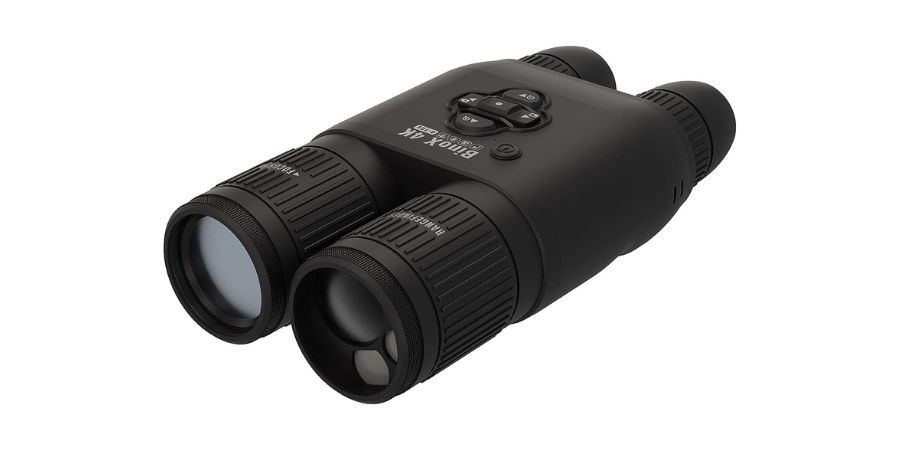
Overview of Thermal Binoculars
Thermal binoculars are advanced optical devices that utilize thermal imaging technology to detect and visualize heat signatures emitted by various objects, animals, or humans. In contrast to traditional night vision optics, which rely on ambient light or infrared illumination, thermal binoculars can perceive heat in complete darkness and through obstacles like smoke or foliage—making them indispensable for activities such as night vision, hunting, wildlife observation, surveillance, and search and rescue operations.
One of the key advantages of thermal binoculars is their ability to provide depth perception and a wider field of view compared to monocular devices. Additionally, they offer enhanced image clarity even in adverse weather conditions such as fog or haze. Through thermal imaging sensors, these binoculars convert heat signatures into visible images, enabling users to effectively detect and track targets at various distances.
Imagine being able to spot the heat signature of a camouflaged animal or identify a potential threat in complete darkness. Thermal binoculars open up a world of possibilities by providing critical information not visible to the naked eye.
When choosing thermal binoculars, several factors should be considered to ensure optimal performance for your specific needs. Factors such as imaging quality, sensor size, detection range, build quality, water resistance, shock absorption, battery life, and additional features play a crucial role in determining the effectiveness of thermal binoculars for different applications.
Detection Range
The detection range of thermal binoculars varies between models and should be carefully considered based on the intended use. Some models offer longer detection ranges than others, significantly impacting their suitability for tasks such as long-range surveillance or hunting.
Imaging Quality
High resolution is vital for clear and detailed images when identifying distant targets. A larger sensor size provides higher resolution and a greater identification range, enhancing the overall performance of the thermal binoculars.
Build Quality and Durability
Robust build quality, water resistance, and shock absorption features are essential for outdoor use to ensure that the thermal binoculars can withstand challenging environmental conditions.
Additional Features
Some thermal binocular models may offer advanced features such as image stabilization, digital zoom capabilities, recording functions, and wireless connectivity options—adding versatility and enhancing usability for specific tasks.
Selecting the right thermal binoculars involves careful consideration of these factors to ensure that they meet your requirements and provide optimal performance for your intended applications.
With a solid understanding of what makes thermal binoculars effective tools for night vision and hunting, let's now delve into the intricacies of infrared lenses and optics.
Infrared Lenses and Optics
Infrared lenses and optics serve as the core components of thermal binoculars, enabling them to capture heat emitted by objects in the environment. To fully grasp their significance, understanding the science behind their operation is crucial. At its core, this technology operates on the principle of detecting long-wave infrared radiation (IR) and converting it into visible images for the user. This is what gives thermal binoculars the extraordinary ability to see in complete darkness, through smoke, and dense foliage.
The functionality of these lenses results from intricate engineering involving various elements seamlessly coming together. A key component of this technology is the sensor size, determining the resolution and identification range provided by the binoculars. A larger sensor size equates to higher resolution, offering clearer and more detailed images, particularly crucial during nighttime activities like hunting or surveillance.
A larger sensor size allows spotting a deer lurking in the woods from a greater distance with better clarity compared to a smaller sensor, providing a significant advantage in nighttime observation.
Furthermore, detection range is a critical consideration when selecting thermal binoculars, influencing how far one can see with clarity. Factors affecting detection range include lens size, focal length, and thermal sensitivity. Understanding these specifications ensures that users can make informed decisions based on intended device use.
Moreover, when it comes to field of view, thermal binoculars offer a wider perspective compared to monocular devices, providing more comprehensive coverage of the surroundings. This added vision improves situational awareness and enhances tracking moving targets across a broader area.
With these fundamental aspects in mind, let's now explore how different infrared lenses and optics impact battery life, weight, and overall performance in thermal binoculars.
Detection of Heat Sources
One of the most remarkable capabilities of thermal binoculars is their ability to detect heat sources in conditions where traditional night vision devices would fail. It's like possessing a superpower to be able to spot a warm-blooded animal or intruder in complete darkness, dense foliage, or smoke.
Understanding Heat Signature But how do thermal binoculars achieve this? They capture infrared radiation emitted from objects, including living beings, and then convert it into a visible image based on temperature differences. This means that regardless of darkness or cluttered environments, residual heat given off by a person or animal can still be detected.
The advantage here is that while traditional night vision relies on ambient light or IR illumination, which can be obstructed by darkness or thick foliage, thermal imaging cuts through these limitations. This technology isn't hindered by environmental conditions such as moonlight, fog, or even camouflage – it's all about those telltale heat signatures.
Maximizing Detection Capabilities To leverage the impressive abilities of thermal binoculars, consider factors such as imaging quality, sensor size, and detection range. High resolution is crucial for clear and detailed images. A larger sensor size provides higher resolution and a greater identification range. Depending on the intended use, the detection range of the binoculars should be carefully considered. Whether it's for hunting or surveillance, being able to recognize targets at greater distances can be pivotal.
Identifying Targets with Precision
Apart from wildlife observation and hunting applications, thermal binoculars are also vital for search and rescue operations. They offer an advantage during nighttime efforts to locate missing individuals by detecting their body heat from a distance.
Depth Perception Furthermore, thermal binoculars provide depth perception within their field of view—this additional dimension aids in distinguishing between multiple objects in varying scenes. This capability helps in recognizing shapes and spatial relationships between detected heat sources, making it easier to distinguish targets from surrounding elements.
Another significant aspect is the refresh rate of the thermal imaging. A faster refresh rate ensures smoother footage when observing moving subjects or scanning a scene for potential threats. This fluidity enhances the user experience, particularly when tracking fast-moving targets.
Thermal binoculars offer unparalleled capabilities in detecting heat sources, providing both enhanced visual clarity and important depth perception in diverse environments. Understanding these key features and optimizing their utilization allows users to harness these devices to their fullest potential for various applications.
Image Quality and Resolution in Thermal Binoculars
When selecting thermal binoculars for night vision and hunting, one crucial factor to consider is the image quality and resolution. It's akin to looking at a photograph—it's better when it's clear, sharp, and detailed. High resolution is crucial for obtaining a clear view and accurately identifying targets, especially in low-light conditions.
The resolution of thermal binoculars typically ranges from 320x240 to 640x480 pixels. A higher resolution grants visibility to finer details in the image—essential when attempting to spot something in the dark or at a distance. A larger sensor size provides higher resolution and a greater identification range, vital for scouting and observing potential targets or wildlife.
For instance, with a high-resolution thermal binocular, you may be able to see more clearly in various lighting conditions and environments. The ability to differentiate between objects becomes more precise - just imagine being able to identify small animals or objects in dense foliage on a hunting trip.
Moreover, image quality is often measured in terms of thermal sensitivity, with the best models having a sensitivity of around 50mK (millikelvin) or lower. The lower the mK value, the smaller the temperature difference the camera can detect. This means that even small variations in temperature can be spotted, providing enhanced situational awareness during nighttime activities.
In addition to resolution and sensitivity, another critical factor that influences image quality is the refresh rate of thermal binoculars, which can range from 30Hz to 60Hz. A higher refresh rate results in a smoother image with less motion blur—crucial for tracking moving targets during nocturnal pursuits.
So, when considering thermal binoculars for night vision and hunting, it's essential to prioritize image quality and resolution. Higher resolution and superior sensor size lead to clearer images with finer details; factors like thermal sensitivity and refresh rate also play pivotal roles in ensuring optimal performance during nighttime use.
Now, let's delve into the long-distance and night vision capabilities of these remarkable thermal binoculars.
Long Distance and Night Vision Capabilities
Thermal binoculars are not just any ordinary pair of binoculars; they are designed to offer exceptional clarity and visibility over long distances, especially in low-light or nighttime conditions. For hunters and outdoor enthusiasts, this capability is crucial for spotting targets, observing wildlife, or navigating through the darkness. When looking for thermal binoculars with superior long-distance viewing and night vision capabilities, there are key factors to consider that significantly impact their performance.
The night vision range of thermal binoculars is a critical consideration. This range indicates how far the binoculars can effectively detect heat signatures in complete darkness. With varying night vision ranges available in different models, it's essential to assess your specific needs and usage scenarios before making a selection. For instance, if you primarily engage in nocturnal hunting or surveillance activities in remote areas, opting for a model with an extended night vision range becomes imperative. On the other hand, for general outdoor use with occasional low-light conditions, a mid-range night vision capability might suffice.
In addition to night vision range, the clarity and sharpness of images at long distances play a significant role in the effectiveness of thermal binoculars. A higher magnification power enables users to observe distant objects with enhanced detail and precision. However, it's essential to strike a balance between magnification power and image stability, as excessive magnification can lead to image distortion and reduced field of view. Opting for thermal binoculars with adjustable magnification settings allows flexibility in adapting to various viewing scenarios.
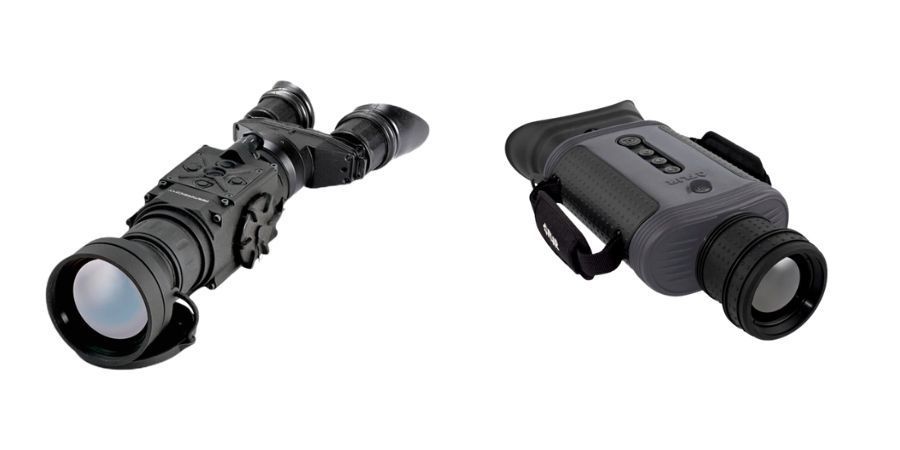
Key Considerations for Long-Distance Viewing
To make an informed decision when selecting thermal binoculars with exceptional long-distance viewing capabilities, it's important to evaluate the following factors:
- Night Vision Range - Determine the range required based on your intended use.
- Magnification Power - Consider the balance between magnification and image stability.
- Field of View - Assess the width of the observable area at a specific distance.
- Image Quality - Ensure high-resolution imaging for clear detail.
Some may lean towards higher magnification settings for longer distance viewing to cover more ground. However, it's also important to consider the potential trade-offs such as reduced image stability or restricted field of view with excessively high magnification levels.
For hunting activities, having thermal binoculars equipped with crosshairs or rangefinding capabilities further enhances accuracy and target acquisition during low-light conditions. These features provide hunters with essential tools for estimating distances and making precise shots irrespective of lighting conditions.
Understanding these critical considerations ensures that you can select thermal binoculars suitable for your specific requirements, offering exceptional long-distance viewing and night vision capabilities tailored to your outdoor pursuits.
With a grasp of vital considerations for long-distance viewing and night vision capabilities in thermal binoculars, let's now explore how these devices enable object detection in motion during outdoor activities.
Object Detection in Motion with Thermal Binoculars
When using thermal binoculars for hunting or surveillance, one of the most crucial factors is their ability to detect moving subjects. The ability to observe objects in motion, such as a deer or an intruder, ensures not only your safety but also the success of your hunting trip or security monitoring. Thermal binoculars excel in providing real-time imaging of moving targets, significantly enhancing situational awareness.
Let's explore the crucial aspects of object detection in motion with thermal binoculars.
Enhanced Situational Awareness
Thermal binoculars provide a significant advantage in situational awareness due to their ability to detect heat signatures. This makes them particularly effective in scenarios where traditional night vision devices may fall short. Spotting moving targets becomes much easier with thermal imaging technology, especially under low-light conditions during hunts or surveillance activities.
Swift Target Acquisition
In hunting or tactical operations, swift target acquisition can be the difference between success and failure. Thermal binoculars offer rapid target identification by highlighting the heat signatures emitted by living beings. This feature is invaluable when tracking game animals or identifying potential threats in security operations.
Adaptability to Changing Environments
Designed to adapt seamlessly to varying environmental conditions, thermal binoculars allow you to maintain consistent performance regardless of the surroundings. Whether it's foggy, smoky, or densely vegetated terrain, these binoculars can effectively detect motion through these obstacles, offering a clear advantage over traditional optical devices.
Real-Time Imaging Capabilities
The real-time imaging capabilities of thermal binoculars are indispensable for dynamic scenarios. Whether surveilling an area or tracking a moving target during a hunting expedition, the ability to receive instant feedback on the subject's movements provides essential information for making timely decisions.
Given their outstanding features for detecting objects in motion, thermal binoculars stand as invaluable tools for hunters and security professionals alike. Their enhanced situational awareness, swift target acquisition, adaptability to changing environments, and real-time imaging capabilities set them apart as essential gear for various applications.
Mastering the art of choosing the best thermal binoculars involves considering various models that cater to specific needs and preferences. Now let's shift our focus to exploring some notable contenders in the realm of thermal binocular technology.
Best Thermal Binocular Models for Night Vision and Hunting
Choosing the right thermal binocular for your nighttime activities can make a world of difference in your experience. Luckily, the market offers several top-rated options that cater to the specific needs of night vision enthusiasts and hunters. Let's closely examine some of the best thermal binocular models highly regarded for their performance and features.
The ATN BinoX THD series is esteemed for its exceptional performance in night vision and hunting scenarios. With true thermal vision and two large objective lenses, this series provides crisp, clear images and excellent zoom capabilities. It also includes full HD image and video recording, WiFi and smartphone control, gyroscope image stabilization, GPS geotagging, and weather resistance—delivering advanced functionality for both surveillance and outdoor activities.
FLIR BHS-X Command Thermal Bi-Ocular
Renowned for its innovative thermal imaging technology, FLIR presents the BHS-X Command Thermal Bi-Ocular. Featuring improved frame rates compared to similar models, this bi-ocular offers enhanced image clarity and detail, making it an ideal choice for night vision applications. Additionally, its photo and video capture capability, interchangeable lenses, and power via rechargeable AA batteries make it a versatile option for hunters and outdoor enthusiasts.
The Armasight Helios 336 boasts increased sensitivity and better frame rates thanks to the latest Tau 2 Thermal Imaging Camera Cores by FLIR. This results in superior image quality and enhanced visibility in low-light conditions—ideal for scanning the terrain for wildlife or tracking targets during nighttime hunts. The Armasight Helios 336 delivers reliable performance and exceptional thermal imaging capabilities.
When selecting a thermal binocular for night vision and hunting, it's essential to consider factors such as image quality, durability, battery life, ergonomics, and additional features that align with your specific requirements. Each of these top models offers unique benefits tailored to different preferences, ensuring that you can find the perfect thermal binocular to enhance your outdoor experiences.
Understanding the distinct features and capabilities of each model allows you to make an informed decision based on your individual needs as a night vision enthusiast or hunter.
In the world of night vision and hunting, having the right equipment can be the difference between success and disappointment. These top thermal binocular models are designed to provide you with the visual edge you need for your nocturnal pursuits. Choose wisely and enjoy your enhanced experience!
Nature's Playbook
As an Amazon Associate I earn from qualifying purchases.



